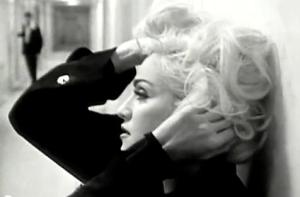
Shah Hussain was a gay Punjabi poet of the 16th century. His love for a young man, Madho Lal, is legendary. Shah Hussain and Madho Lal are buried side by side at Shah Hussain’s shrine in Lahore. They are known to eternity as “Madho Lal Hussain.”
When I read Shah Hussain for the first time, I felt like I was looking back at myself five hundred years ago. Reading his work, as a gay Punjabi-Canadian man, gave me a sense of pride and belonging to a culture I’d long grown alienated from. I was then recently put off to see Naveed Alam trying to deny Shah Hussain’s sexuality in Alam’s introduction to his translation of Shah Hussain’s verse.
According to Alam, Shah Hussain couldn’t have been gay, because:
- Shah Hussain’s poems make no overt references to homosexuality;
- Shah Hussain’s love for Madho Lal was platonic;
- Shah Hussain wrote in the feminine voice in keeping with Sufi tradition (where God’s devotee refers to himself in feminine terms).
Alam’s first point makes no sense. He claims that a poet like Shah Hussain cannot be gay unless he overtly expresses his homosexuality in his poetry. By this logic, a poet cannot be heterosexual either unless his heterosexuality is overtly expressed in his poetry.
In any case, Shah Hussain probably didn’t express his sexuality overtly in his poetry for good reasons.
According to the platonic love theory, Shah Hussain and Madho Lal were master and disciple respectively and their love should be seen in that context.
The problem is that there is no proof that Madho Lal (a Hindu Brahmin) was even a follower of Shah Hussain or that he was part of a Sufi order. In fact, had Madho Lal been a disciple, then it would’ve been he who was expected to write poems in praise of his master, not the other way around.
Shah Hussain wrote otherwise:
My lover grabbed my arm
Why would I ask him to let go?
Dark night drizzling, painful
The approaching hour of departure
You’ll know what love’s all about
Once it seeps into your bones…
(trans. N. Alam)
Hagiographic accounts also tell us about Shah Hussain’s love for Madho Lal:
When he looked at Madho, he signed painfully and said: ‘Friends, take heed. This boy has set my heart out of control. With one look he has made my heart restless. With one look he has taken away my heart. Taken the life out of my heart, and the soul out of my body. What should I do, friends? What should I do to make him fall in love? Friends, I’ve become a prisoner of his love. I shall not find peace till I see him” (Haqiqat al-Fuqra (‘Truth of the Saints’), c. 1660).
In another account, one of Shah Hussain’s followers spies on Madho Lal Hussain:
You [Hussein] are taking a glass of wine from Madho and kissing Madho on the forehead and the Madho is also kissing Hussein’s forehead … Madho again gives a full glass to Shah Hussein, stands and greets him respectfully. Hussein also gets up and greets Madho respectfully. The two friends remained busy in this matter, and kept kissing each other like milk and sugar … and then the two friends become one.
As for the feminine voice, Shah Hussain uses it even when not speaking to God. Shah Hussain refers to himself in feminine terms when sitting at the spinning wheel, taking part in women’s folk dances and sharing secrets with his girlfriends. This feminine voice is Shah Hussain’s soul speaking as a gay man.
In Shah Hussain, Punjabi and Pakistani gay men can hear their own voice, songs and verses singing back to them. The light and passion in his poems is smothered by people foisting their own culturally acceptable interpretations onto it. Shah Hussain’s love for Madho Lal comes alive when we embrace it fully for what it is.

